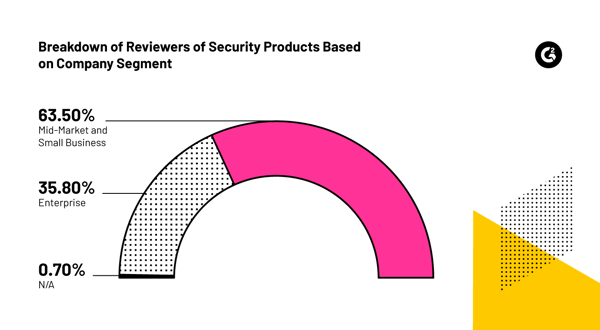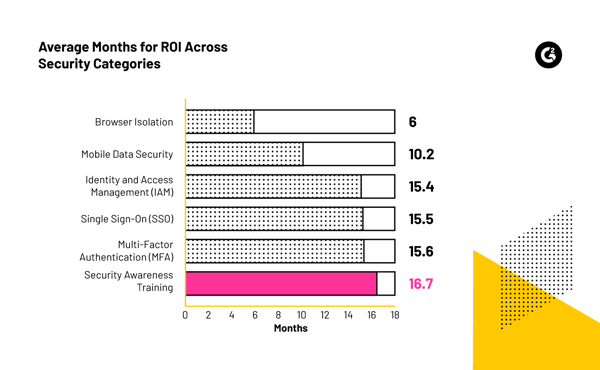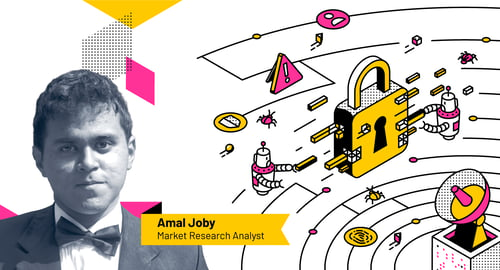This post is part of G2's 2024 technology trends series. Read more about G2’s perspective on digital transformation trends in an introduction from Chris Voce, VP, market research, and additional coverage on trends identified by G2’s analysts.
Machine learning drives the rise of centralized data security management
Prediction
In 2024, data from different security solutions will be consolidated into a single AI-driven platform, helping users benefit from a unified approach to threat detection and prevention.
In 2024 and beyond, businesses will have a hard time not incorporating the power of machine learning into their products.
In fact, according to the 2023 G2 Software Buyer Behavior Report, 81% of buyers say that moving forward, it’s important the software they purchase has AI functionality.
Since machine learning is good at continuously learning by analyzing data and spotting patterns, data security software vendors have long been incorporating it into their products. Going forward, cybersecurity software developers will not only use machine learning to enhance their security features but also to enrich user experience.
Undoubtedly, complete automation of security processes is still a long way ahead or rather unnecessary for reasons pertaining to human-in-the-loop. However, more and more security tools are undergoing simplification and consolidation by utilizing what machine learning has to offer.
Analyzing G2 reviewer trends in security products
On G2, 63.5% of reviewers of security products belong to small and mid-sized businesses, hinting that most users lack the in-house expertise to manage complex security solutions.

This makes it even more important for security vendors to simplify, consolidate, and automate their security offerings to increase the chances of success among the majority of buyers.
By consolidating multiple security solutions into a single AI-driven platform, users can benefit from a unified approach to threat detection and prevention. Security teams can monitor and manage different security aspects from a single dashboard, streamlining operations and improving overall efficiency.
Several software vendors are adopting this unified approach and offering a single platform that collectively analyzes data from multiple security systems. This enables users to better understand the threat vectors and the areas they need to focus on the most.
2023 cybersecurity trends in retrospect
In G2’s 2023 digital trends series, we mentioned how security becomes more proactive than reactive and also highlighted how organizations will invest more in security awareness training tools.
Although the prediction seems to be true, there is more to it. As per G2 data of the past 12 months, it takes longer to attain a return on investment (ROI) for security awareness training tools than other security tools.

Therefore, it might be a better idea to invest more in security tools like mobile data security software and browser isolation software to witness quicker results.
But, of course, the impact of security awareness training tools is usually beyond any performance metric. They are critical to causing a culture change within the organization and making employees more informed about phishing attacks and data security in general.
Artificial intelligence: the protagonist and the antagonist
With the ever-expanding amount of data stored, performing most cybersecurity procedures without utilizing machine learning is nearly impossible.
For example, machine learning is crucial for sensitive data discovery. It’s also useful for detecting malware, insider threats, or policy violations. Automated incident response is another area where machine learning shines.
However, AI-powered cyberattacks are also becoming increasingly common. For example, AI-powered malware can adapt its course of action to the situation and cause significant damage. AI-generated synthetic media is heavily used for deepfake attacks and carrying out disinformation campaigns.
With all the benefits that AI has to offer, businesses should stay updated about its misuse cases to protect themselves and their customers. And yes, in this war, both parties are armed with the power of AI.
Learn how organizations can protect their employee data.
Edited by Jigmee Bhutia


 by Amal Joby
by Amal Joby
 by Amal Joby
by Amal Joby
 by Amal Joby
by Amal Joby